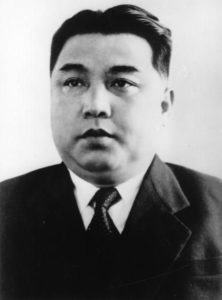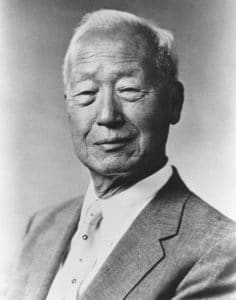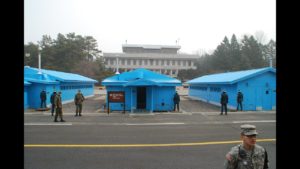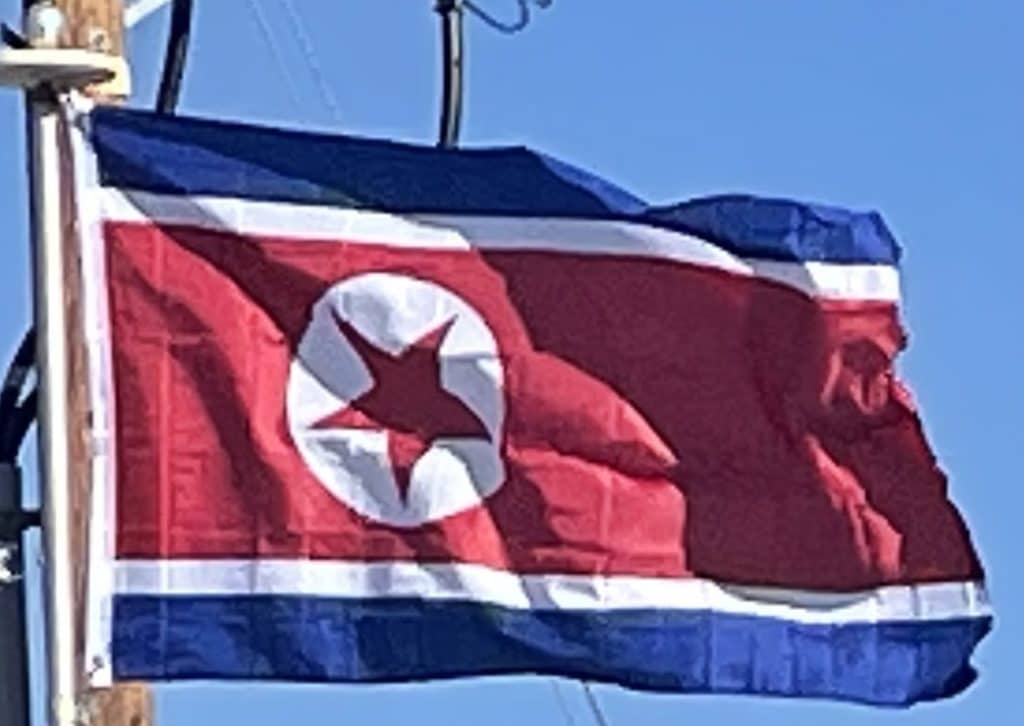
After the Japanese surrender at the end of World War II in 1945, the Korean Peninsula was divided into two zones along the 38th parallel, with the northern half of the peninsula occupied by the Soviet Union and the southern half by the United States. Negotiations on reunification failed. Soviet general Terentii Shtykov recommended the establishment of the Soviet Civil Authority in October 1945, and supported Kim Il-sung as chairman of the Provisional People’s Committee for North Korea, established in February 1946. In September 1946, South Korean citizens rose up against the Allied Military Government. In April 1948, an uprising of the Jeju islanders was violently crushed. The South declared its statehood in May 1948 and two months later the ardent anti-communist Syngman Rhee became its ruler. The Democratic People’s Republic of Korea was established in the North on 9 September 1948. Shtykov served as the first Soviet ambassador, while Kim Il-sung became premier.

Soviet forces withdrew from the North in 1948, and most American forces withdrew from the South in 1949. Ambassador Shtykov suspected Rhee was planning to invade the North and was sympathetic to Kim’s goal of Korean unification under socialism. The two successfully lobbied Joseph Stalin to support a quick war against the South, which culminated in the outbreak of the Korean War.
Korean War:
The military of North Korea invaded the South on 25 June 1950, and swiftly overran most of the country. A United Nations force, led by the United States, intervened to defend the South, and rapidly advanced into North Korea. As they neared the border with China, Chinese forces intervened on behalf of North Korea, shifting the balance of the war again. Fighting ended on 27 July 1953, with an armistice that approximately restored the original boundaries between North and South Korea, but no peace treaty was signed. Approximately 3 million people died in the Korean War, with a higher proportional civilian death toll than World War II or the Vietnam War, making it perhaps the deadliest conflict of the Cold War-era. In both per capita and absolute terms, North Korea was the country most devastated by the war, which resulted in the death of an estimated 12–15% of the North Korean population (c. 10 million), “a figure close to or surpassing the proportion of Soviet citizens killed in World War II,” according to Charles K. Armstrong. As a result of the war, almost every substantial building in North Korea was destroyed. Some have referred to the conflict as a civil war, with other factors involved.

A heavily guarded demilitarized zone (DMZ) still divides the peninsula, and an anti-communist and anti-North Korea sentiment remains in South Korea. Since the war, the United States has maintained a strong military presence in the South which is depicted by the North Korean government as an imperialist occupation force. It claims that the Korean War was caused by the United States and South Korea.
Post-War Developments:
The relative peace between the South and the North following the armistice was interrupted by border skirmishes, celebrity abductions, and assassination attempts. The North failed in several assassination attempts on South Korean leaders, such as in 1968, 1974, and the Rangoon bombing in 1983; tunnels were found under the DMZ and tensions flared over the axe murder incident at Panmunjom in 1976. For almost two decades after the war, the two states did not seek to negotiate with one another. In 1971, secret, high-level contacts began to be conducted culminating in the 1972 July 4th North–South Joint Statement that established principles of working toward peaceful reunification. The talks ultimately failed because in 1973, South Korea declared its preference that the two Koreas should seek separate memberships in international organizations.
